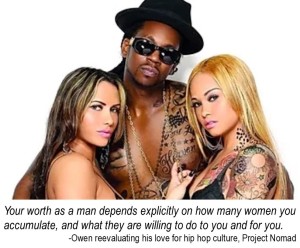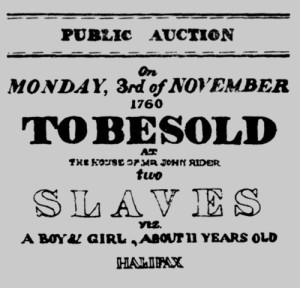Slavery is said to have died out in the Canadas in the early 19th century. But did it really?
A few years ago, a new term for the undead issue began creeping its way into our vernacular. That term is Human Trafficking. According to Canada’s Human Trafficking National Coordination Centre, the term identifies a form of slavery that is very much alive today; that it happens primarily in the sex trade -an environment that’s already full of risks and harms that include disease, addictions, mental heath issues and an 18-times-higher homicide rate (not including suicides).[1] But trafficking specifically denotes exploitation through force or coercion, and young female Canadians are it’s predominant victims. Research suggests that this is the reality for as many as 17 out of 20 prostitutes.[2]
Sadly, the crime of human sex trafficking has remained beyond our collective awareness for two centuries. I suspect the reason was disregard for its victims who were viewed as criminals and were lumped together with all the other ne’er-do-wells. But during that period, prostitution wasn’t actually illegal in Canada, and the shift toward criminalization didn’t begin until 35 years ago. While buying and selling sexual services was still allowed under the law in 1985, it suddenly became illegal to solicit for it in a public place. The change wasn’t actually meant to stop prostitution, but to move it out of public view. As a result, we saw a proliferation of massage parlours and prostitution ads in newspapers.
Also during the 80’s there arose a more serious concern about prostitution; namely “juvenile prostitutes”. This time, legislators went beyond calling prostitution a social nuisance by identifying it as exploitation. 12 years after outlawing solicitation, Ottawa made it illegal to buy sex with children (under 18). Alberta simultaneously responded with provincial legislation, giving police and child protection workers the ability to remove kids from their traffickers. Other provinces followed suit, but not the province that is said to host the lion’s share of Canada’s human trafficking.[3]
After Canada’s prostitution laws -public solicitation, running a “common bawdy house” and third party profiting- were ruled unconstitutional in 2013, the federal government responded. New legislation called Protection Of Communities And Exploited Persons Act (PCEPA/Bill C-36) made the purchase of sexual services illegal -anytime, anywhere and with anyone. Instead of viewing prostitutes (or prostituted persons and many people now prefer) as criminals, they were presumed to be “exploited persons”.[4] The act intended that exploited persons be addressed with dignity under the law and given support to exit the sex trade.
PCEPA largely meant to discourage men (the buyers) from participating in prostitution. The rationale was that a drop in business would require less product -the “product” being young women. Of course, that drop would not happen without strong and consistent enforcement against the buying of sexual services.
 Instead of cooperating with the plan laid out by federal lawmakers, provinces decided to try fixing the problem by almost exclusively targeting the traffickers. I’m not suggesting that investigating human trafficking should be halted, but Attorney Generals across the country have put all their eggs in one basket with the notion that traffickers will change their behaviour when faced with the risk of being caught. It’s a wild assumption when the most glorified these in urban music has long been human trafficking (pimping)[5] and the ultimate goal is attaining outlaw status.
Instead of cooperating with the plan laid out by federal lawmakers, provinces decided to try fixing the problem by almost exclusively targeting the traffickers. I’m not suggesting that investigating human trafficking should be halted, but Attorney Generals across the country have put all their eggs in one basket with the notion that traffickers will change their behaviour when faced with the risk of being caught. It’s a wild assumption when the most glorified these in urban music has long been human trafficking (pimping)[5] and the ultimate goal is attaining outlaw status.
Until they are proven wrong, I suppose the provinces will continue to pour massive resources into human trafficking prosecutions while ignoring the funders of the crime. Now that we’re five years into the experiment, police sources like Toronto’s Det. Sgt. Nunzio Tramontozzi (Ret.) claim, “The number of offences…has increased dramatically.”[6] The numbers[7] certainly do suggest we’re losing the war on human trafficking.
The plain truth is this: It’s the man who fixes your car, and the man who sells you insurance, and the man who teaches at your child’s school who, when he chooses to buy sex, decides the fate of another vulnerable girl who has already been groomed by the pimps. Buying sex creates victims and destroys young lives. That’s why sex buyers are the problem. Not until the demand for prostituted girls and women drops will we see a decrease in the rate exploitation.
What can you do? Please continue to educate yourself and others in your community. Lobby your politicians -municipal, provincial and federal. Bring to their attention that prosecuting pimps, while not a bad idea, isn’t working to stop human trafficking. If you agree that those who fund sex trafficking (the buyers) should be held accountable, let them know that, as well. And if you’re a praying person, pray hard! It’s going to take a great many voices win this fight against human trafficking in Canada. Thank you for yours.
______________________
- Mortality in Long-Term Open Cohort Prostitute Women, John J. Potterat, Devon D. Brewer, Stephen Q. Muth, Richard B. Rothenberg, Donald E. Woodhouse, John B. Muth, Heather K. Stites, Stuart Brody. https://academic.oup.com/aje/article/159/8/778/91471?searchresult=1
- Slavery & Prostitution: A Twenty-First-Century Abolitionist Perspective, Melissa Farley P.295 https://prostitutionresearch.com/wp-content/uploads/2016/07/Slavery-Prostitution-Farley-2015.pdf
- Alberta led the way in adopting provincial legislation to protect minors from commercial sexual exploitation. Soon thereafter, British Columbia, Saskatchewan and Manitoba provided similar measures. Ontario’s Bill 86 – Recuing Children from Sexual Exploitation Act (2002) also passed the third reading under the Eves Progressive Conservatives but was not able to enact the legislation before the McGuinty Liberals mothballed it in 2003.
- For more details of PCEPA read: Canada’s new prostitution laws: Everything you need to know, Josh Wingrove, Globe & Mail http://www.theglobeandmail.com/news/politics/canadas-new-prostitution-laws-everything-you-need-to-know/article19610318/
- Rachel Lloyd and quoted in Experts: Hottest Hip Hop Glorifies Pimping, Carla Thompson, Women’s eNews. https://womensenews.org/2003/11/experts-hottest-hip-hop-glorifies-pimping/
- Luring of girls into sex trade reaching ‘epidemic’ level, police say, CBC News https://www.cbc.ca/news/canada/toronto/human-trafficking-toronto-1.5126939
- Hidden In Plain Sight: Sex Trafficking in Canada, Nadia Kanji, Inter Press Service. http://www.ipsnews.net/2019/07/hidden-plain-sight-sex-trafficking-canada/


